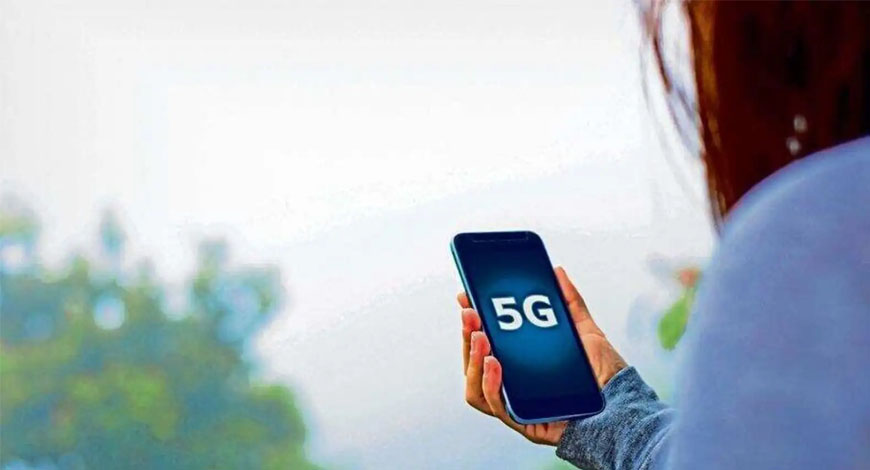5G
5G struggles to gain traction as users stick with 4G

A year after the launch of 5G services, Reliance Jio and Bharti Airtel together may have notched up a subscriber base of around 125 million, but are still unable to recoup their investments. This is due to absence of meaningful use cases for which the they can charge a premium rate.
As a result, for most of the users currently with a 5G smartphone, 4G continues to be sufficient to meet their daily data usage needs.
The CapEx of the two operators for rolling out 5G networks is expected to be near Rs 90,000 crore in FY24. However, there has not been any killer application that can replace 4G with 5G and prompt users to upgrade, according to experts. Therefore, what’s on offer and will continue to be so, is 5G services at 4G rates.
Says TV Ramachandran, president Broadband India Forum, “It is an open secret that the technology does not provide business viability. This is unsurprising since the experience everywhere is that the real use case of 5G today is only speed and, generally speaking, 4G speeds are more than adequate to provide good quality of experience for customers”.
This view is echoed by Bharti Airtel CEO, Gopal Vittal. “I think the challenge on 5G is that the real use case on 5G today is only speed…you need more applications to be written on 5G networks which really use the benefit of this technology, which unfortunately is not the case, not just in India, but in no market anywhere in the world,” Vittal said recently.
Reliance Jio president Mathew Oommen is clear that the monetisation, whenever it happens, will happen through enterprises. “5G capabilities are going to be monetised mostly through industry vertical services, and through enterprise solutions and service,” he told Fe.
What he means is that monetisation opportunity lies in private networks where telcos can provide services to the enterprises via network slicing or by giving spectrum on lease. However, here also the take up is very slow.
According to Ramachandran, 10-15 Mbps speeds are enough to get good video streaming experience and satisfactorily handle most other applications in everyday use including casual online gaming. He said that advanced, specialised applications like augmented reality, virtual reality, immersive gaming etc would require higher speeds but such usage alone is not enough for business viability.
Further, experts believe that 4G itself can deliver much higher speeds since Indian 4G speed has been only about half of international norms. Thus, customers are somewhat indifferent to 5G and only about 15% have upgraded from 4G.
Realising that returns will be delayed in absence of a meaningful 5G use case, Airtel has slowed down the CapEx in rolling out 5G networks. It stated that it will not put unnecessary CapEx to make a claim of the largest rollout. Currently, apps for messaging, video streaming and even casual gaming do not require more than 15 mbps speeds and the same can easily be met via 4G networks.
Though telcos are analysing the trends of 5G network usage, industry executives said whenever telcos would plan to charge for 5G from retail consumers, it would be in the form of quality of services (QoS) offering with better upload and download speeds, and higher data bucket bundled with content-rich apps.
According to a recent Ericsson ConsumerLab report, a total of 15% of Indian consumers are interested in adding application bundles, including video on demand, gaming and music, to their 5G plans, even at a higher cost. “They are prepared to pay a 14% premium for these services,” the report said.
In absence of prominent 5G use cases, currently 5G fixed wireless access (FWA) is seen as the only solution on which telcos can bank on and start recouping some of the investments. The FWA solution, which is capable of providing fiber-like speeds at homes or offices, was launched by the telcos as AirFiber recently.
Experts said, even by using FWA, telcos will not be able to give meaningful 5G experience to users inside their homes at present, owing to legacy routers that support 2.4 GHz and 5 GHz Wi-Fi technologies. FWA will be able to provide better speeds inside homes, only when there is availability of 6 GHz spectrum band that too delicensed for Wi-Fi.
“5G monetisation (via FWA) is going to be difficult unless the Wi-Fi capacity inside the house is increased which can be done through delicensing of 6 GHz band,” said Parag Kar, former vice president of government affairs for India and South Asia at Qualcomm, in a YouTube session.
According to Kar, the telcos will not be able to utilise the existing 5G spectrum in the 26 GHz and 3.5 GHz as using these bands in-house connectivity will be difficult to provide. Therefore, going forward, the government also will not be able to sell additional 5G spectrum as there will be under-utilisation of the spectrum already acquired by the telcos.
Though analysts and operators maintain that these are early stages of deployment, they also point out that in the absence of monetisation, operators will lack motivation for making further investments. Financial Express















You must be logged in to post a comment Login